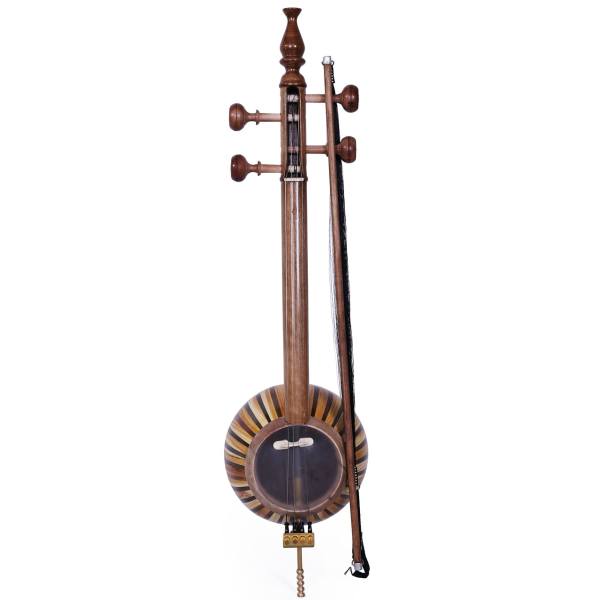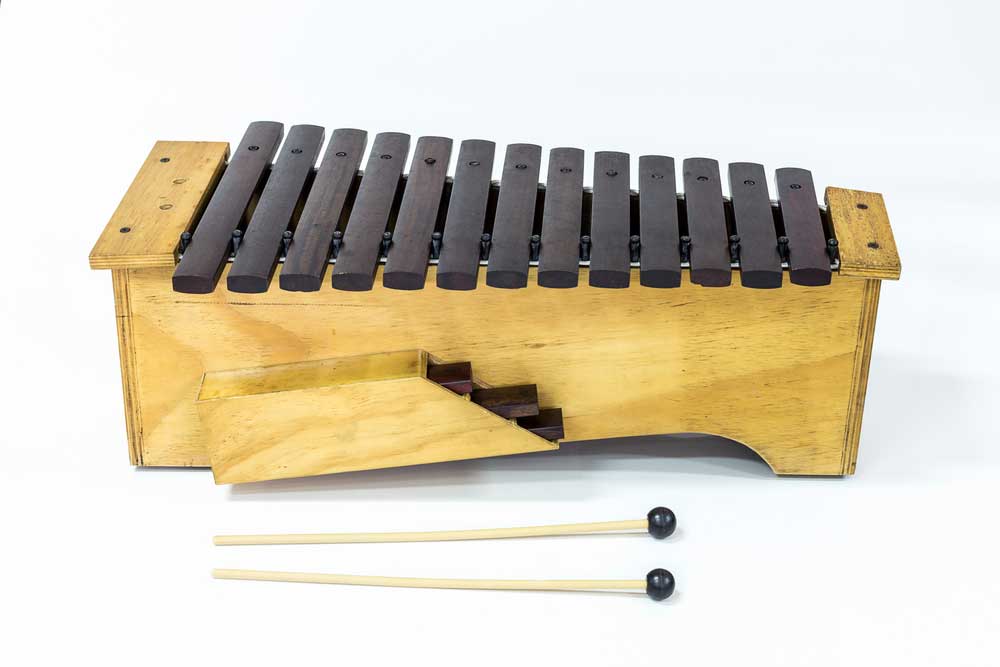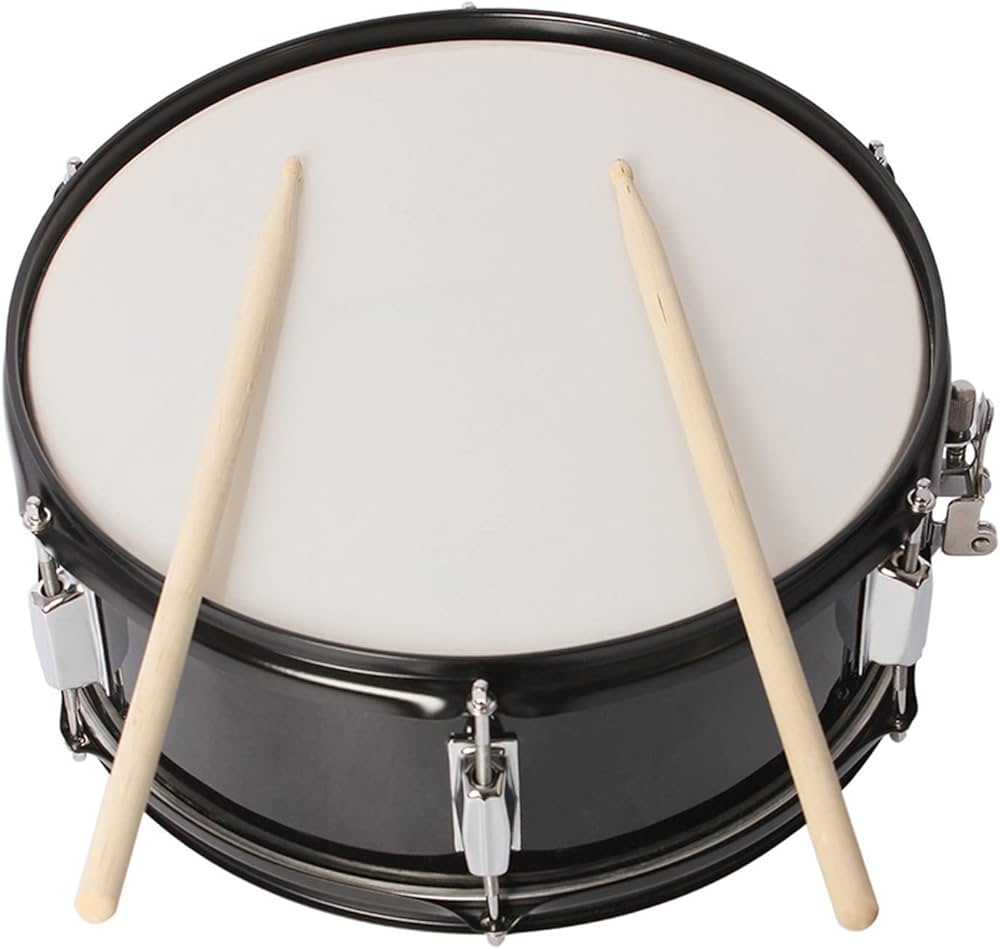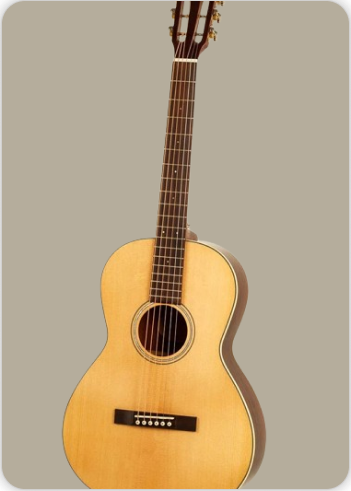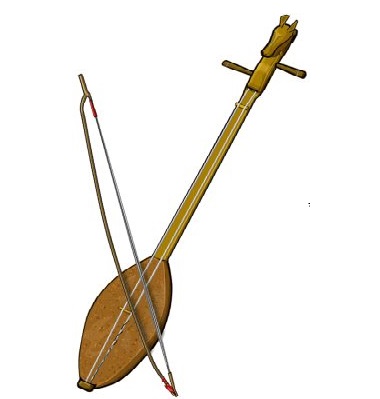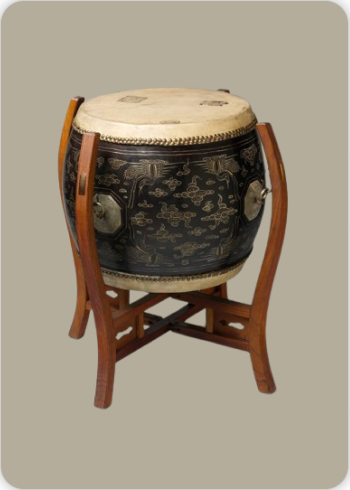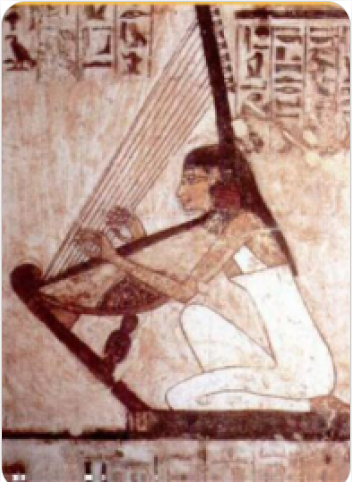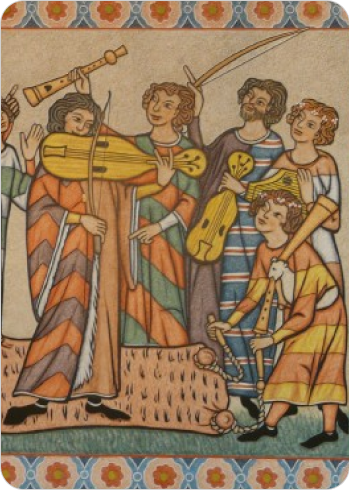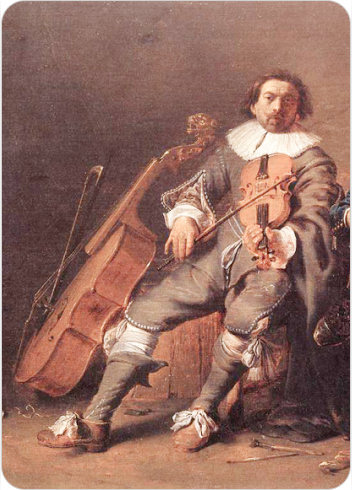Igil
Bowed Instruments
Asia
Between 0 and 1000 AD
Video
The igil, a two-stringed musical instrument from Tuva, is not just an object of sound; it embodies the culture, history, and artistry of the Tuvan people. This elegant instrument, often referred to as a horse-head fiddle due to its distinctive design, plays a crucial role in the region’s musical landscape.
Description and Working Mechanism
The igil is characterized by its unique construction. It typically features a neck and a lute-shaped sound box made from solid pieces of pine or larch. The sound box may be covered with either skin or a thin wooden plate to enhance its acoustic properties. The strings of the igil are traditionally made from horsetail hair but can also be crafted from modern materials like nylon. This choice of materials contributes to the instrument’s distinctive sound quality. The igil is played using a bow that is held with an underhand grip. Unlike many Western string instruments, the igil does not have frets; instead, players lightly touch the strings with their nails or fingertips without pressing them against the neck. This technique allows for a wide range of tonal variations and expressive capabilities. The instrument is typically held upright in the player’s lap or braced against their boot while being played.
History of Igil
Historically, the igil has been central to Tuvan music and culture, often accompanying traditional throat singing known as khöömei. The igil’s repertoire includes songs that were specifically composed for its unique sound. During the communist era in Tuva, attempts were made to modernize the igil by adapting it to resemble Western instruments like the cello. However, many contemporary Tuvan musicians have retained traditional playing styles and construction methods, ensuring that the essence of the igil remains intact.
Origins
The igil likely evolved as part of the Tuvan people’s pastoral traditions. Nomadic herders across Central Asia created various string instruments, often inspired by their natural surroundings and everyday life. The igil is part of this broader family of two-stringed instruments found across Inner Asia, such as the Mongolian morin khuur (horsehead fiddle) and the Kazakh kobyz. Its name, “igil,” is thought to derive from a Tuvan word related to strings or plucking. The instrument’s design and use were influenced by Tuvan spiritual beliefs, such as animism and shamanism, as well as the region’s strong connection to horses, which are a vital part of Tuvan culture. The igil is believed to have ancient origins, dating back to at least the 7th–10th centuries, during the rise of Turkic-speaking nomadic cultures in the steppes of Central Asia. Its development is closely linked to the shamanic and animistic practices of the region, where music played a spiritual role in connecting with nature and the spirit world.
Design and Structure
The igil typically has:
- Two strings, traditionally made from horsehair.
- A rectangular or oval wooden body, covered with goat or sheepskin, which acts as a resonator.
- A neck and tuning pegs, often carved from wood, with elaborate decorations.
- A horsehead carving on top of the neck, symbolizing the Tuvan people’s reverence for horses.
The strings are played with a bow strung with horsehair, and the instrument produces a rich, resonant sound. Players often create both melodic and drone-like tones to accompany Tuvan throat singing.
Cultural and Historical Role
The igil has a significant place in Tuvan folklore, storytelling, and ceremonies. It is often associated with legends and epics, such as the story of the hero Oskus-ool and his magical horse. Many Tuvan songs performed on the igil recount tales of nature, ancestors, or the spirits of the steppe. Historically, the igil was played at communal gatherings, festivals, and shamanistic rituals. Its music was believed to have spiritual power, capable of invoking the spirits of animals and nature.
Modern Revival
During the Soviet era, traditional Tuvan music and instruments like the igil faced suppression in favor of Western musical styles. However, with the collapse of the Soviet Union, there was a cultural revival in Tuva, leading to renewed interest in the igil and throat singing.
Contemporary Tuvan ensembles, such as Huun-Huur-Tu and Alash Ensemble, have brought the igil to international audiences. These groups blend traditional Tuvan music with modern elements, ensuring the igil remains an enduring symbol of Tuvan heritage. The igil today continues to be a vital part of Tuvan identity, celebrated for its unique sound and its connection to the region’s nomadic past.
Types of Igil
Traditional Igil: The standard two-string version commonly used in Tuvan music.
Banjo-style Igil: Incorporates a banjo-like sound box for enhanced projection.
Ikili: A regional variation found in Western Mongolia.
Modernized Igils: Adaptations made during attempts to westernize Tuvan music.
Music Composed with Igil
The music composed for the igil ranges from traditional folk songs to contemporary pieces that blend various genres. The instrument often accompanies throat singing, creating a symbiotic relationship between voice and string that reflects Tuvan beliefs about nature and sound. Notable performances include works by celebrated players such as Ak-ool Kara-sal and Kaigal-ool Khovalyg.The repertoire often includes themes related to nature, spirituality, and everyday life in Tuva. The haunting melodies produced by the igil evoke emotions tied to these themes, making it an integral part of Tuvan storytelling through music.
Significance in Tuvan Culture
The igil holds profound significance in Tuvan culture beyond its musical role. It represents a connection to nature and spirituality; many Tuvans believe that music is a way to communicate with natural spirits. The instrument is often used in rituals and celebrations, reinforcing its status as a cultural symbol.In recent years, efforts have been made to promote awareness and appreciation for traditional instruments like the igil. Events such as National Throat Singers Day highlight its importance in preserving Tuvan heritage.
Additionally, initiatives aimed at reviving traditional crafting techniques ensure that future generations can continue this rich musical legacy. The igil is more than just an instrument; it is a vessel of cultural identity for the Tuvan people. Its haunting melodies resonate with stories of nature and spirituality while bridging past traditions with contemporary expressions of art.
FAQ
What are the primary uses of the Igil in Tuvan culture?
The Igil is primarily used in Tuvan traditional music for storytelling, rituals, and ceremonies. It is also a key instrument in throat singing, enhancing its harmonic resonance and evoking the sounds of nature.
What is the origin of the Igil?
The Igil originates from the Tuva region in Central Asia, where it has been a significant part of the nomadic culture. Its design and use are closely tied to the natural and spiritual elements of Tuvan life, symbolizing a connection to animals and the environment.
What are the different types of Igil?
While the Igil itself is a distinct instrument, variations can exist in its construction, such as differences in the materials used for the body, strings, or bow. Modern adaptations may also include decorative elements that reflect regional artistry.
 Links
Links
References
Other Instrument
Categories
